Jun Wang
IBM T. J. Watson Research Center
Chinese Word Segmentation with Heterogeneous Graph Neural Network
Jan 22, 2022Abstract:In recent years, deep learning has achieved significant success in the Chinese word segmentation (CWS) task. Most of these methods improve the performance of CWS by leveraging external information, e.g., words, sub-words, syntax. However, existing approaches fail to effectively integrate the multi-level linguistic information and also ignore the structural feature of the external information. Therefore, in this paper, we proposed a framework to improve CWS, named HGNSeg. It exploits multi-level external information sufficiently with the pre-trained language model and heterogeneous graph neural network. The experimental results on six benchmark datasets (e.g., Bakeoff 2005, Bakeoff 2008) validate that our approach can effectively improve the performance of Chinese word segmentation. Importantly, in cross-domain scenarios, our method also shows a strong ability to alleviate the out-of-vocabulary (OOV) problem.
Learning to Identify Top Elo Ratings: A Dueling Bandits Approach
Jan 20, 2022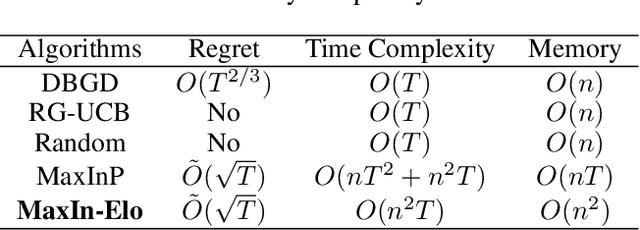
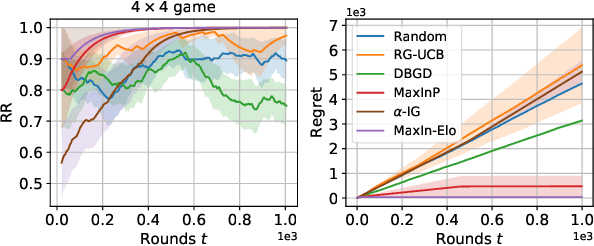
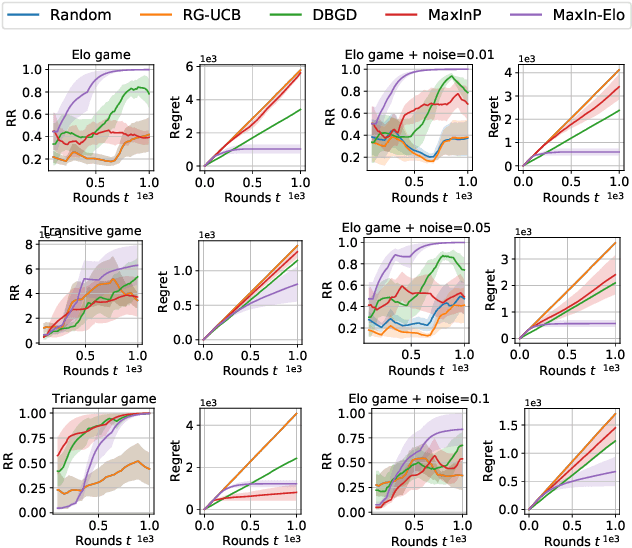
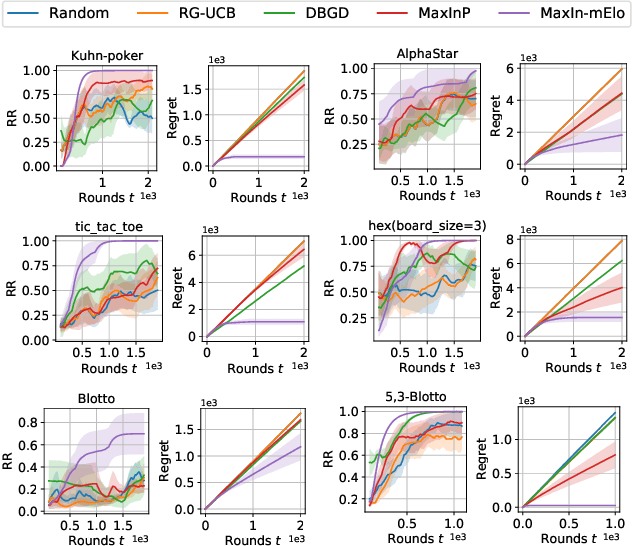
Abstract:The Elo rating system is widely adopted to evaluate the skills of (chess) game and sports players. Recently it has been also integrated into machine learning algorithms in evaluating the performance of computerised AI agents. However, an accurate estimation of the Elo rating (for the top players) often requires many rounds of competitions, which can be expensive to carry out. In this paper, to improve the sample efficiency of the Elo evaluation (for top players), we propose an efficient online match scheduling algorithm. Specifically, we identify and match the top players through a dueling bandits framework and tailor the bandit algorithm to the gradient-based update of Elo. We show that it reduces the per-step memory and time complexity to constant, compared to the traditional likelihood maximization approaches requiring $O(t)$ time. Our algorithm has a regret guarantee of $\tilde{O}(\sqrt{T})$, sublinear in the number of competition rounds and has been extended to the multidimensional Elo ratings for handling intransitive games. We empirically demonstrate that our method achieves superior convergence speed and time efficiency on a variety of gaming tasks.
Debiased Recommendation with User Feature Balancing
Jan 16, 2022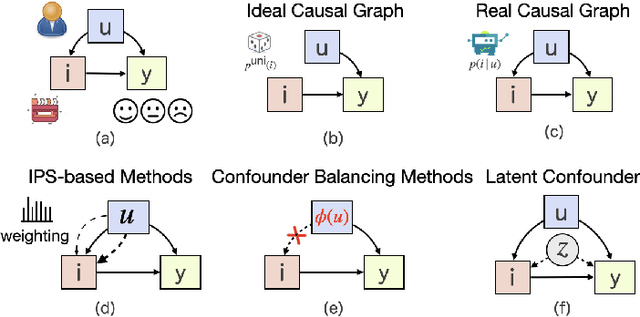

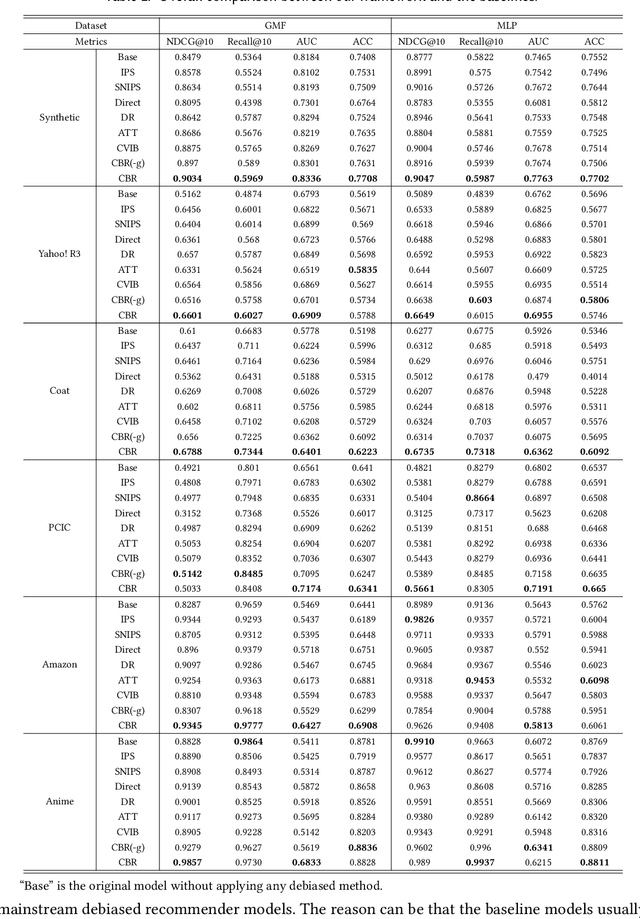

Abstract:Debiased recommendation has recently attracted increasing attention from both industry and academic communities. Traditional models mostly rely on the inverse propensity score (IPS), which can be hard to estimate and may suffer from the high variance issue. To alleviate these problems, in this paper, we propose a novel debiased recommendation framework based on user feature balancing. The general idea is to introduce a projection function to adjust user feature distributions, such that the ideal unbiased learning objective can be upper bounded by a solvable objective purely based on the offline dataset. In the upper bound, the projected user distributions are expected to be equal given different items. From the causal inference perspective, this requirement aims to remove the causal relation from the user to the item, which enables us to achieve unbiased recommendation, bypassing the computation of IPS. In order to efficiently balance the user distributions upon each item pair, we propose three strategies, including clipping, sampling and adversarial learning to improve the training process. For more robust optimization, we deploy an explicit model to capture the potential latent confounders in recommendation systems. To the best of our knowledge, this paper is the first work on debiased recommendation based on confounder balancing. In the experiments, we compare our framework with many state-of-the-art methods based on synthetic, semi-synthetic and real-world datasets. Extensive experiments demonstrate that our model is effective in promoting the recommendation performance.
Differentiable and Scalable Generative Adversarial Models for Data Imputation
Jan 10, 2022
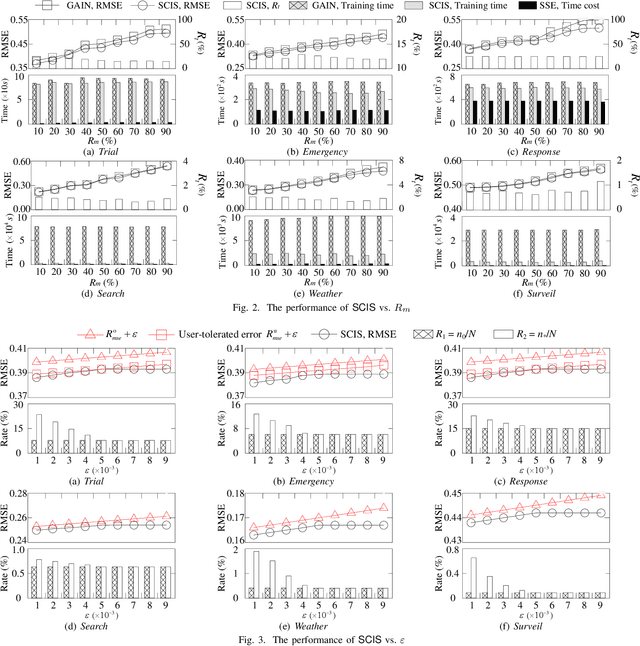
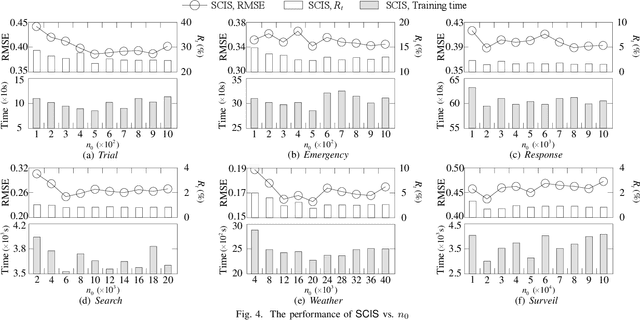
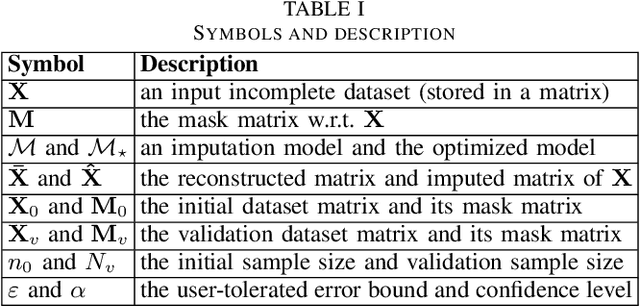
Abstract:Data imputation has been extensively explored to solve the missing data problem. The dramatically increasing volume of incomplete data makes the imputation models computationally infeasible in many real-life applications. In this paper, we propose an effective scalable imputation system named SCIS to significantly speed up the training of the differentiable generative adversarial imputation models under accuracy-guarantees for large-scale incomplete data. SCIS consists of two modules, differentiable imputation modeling (DIM) and sample size estimation (SSE). DIM leverages a new masking Sinkhorn divergence function to make an arbitrary generative adversarial imputation model differentiable, while for such a differentiable imputation model, SSE can estimate an appropriate sample size to ensure the user-specified imputation accuracy of the final model. Extensive experiments upon several real-life large-scale datasets demonstrate that, our proposed system can accelerate the generative adversarial model training by 7.1x. Using around 7.6% samples, SCIS yields competitive accuracy with the state-of-the-art imputation methods in a much shorter computation time.
Settling the Bias and Variance of Meta-Gradient Estimation for Meta-Reinforcement Learning
Dec 31, 2021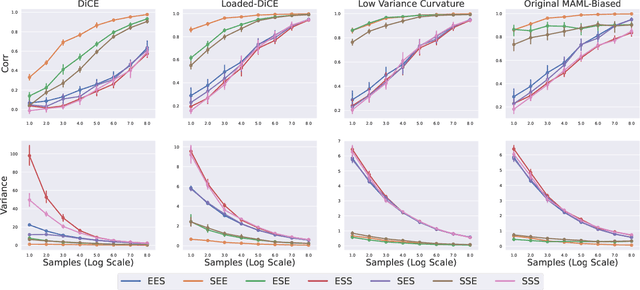
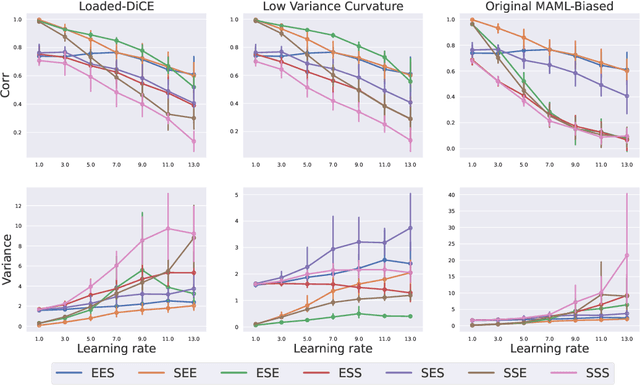
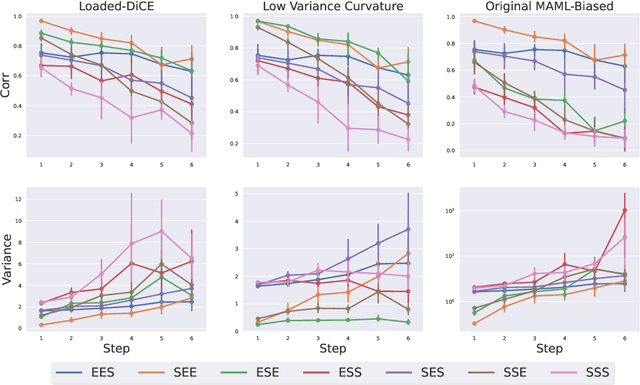
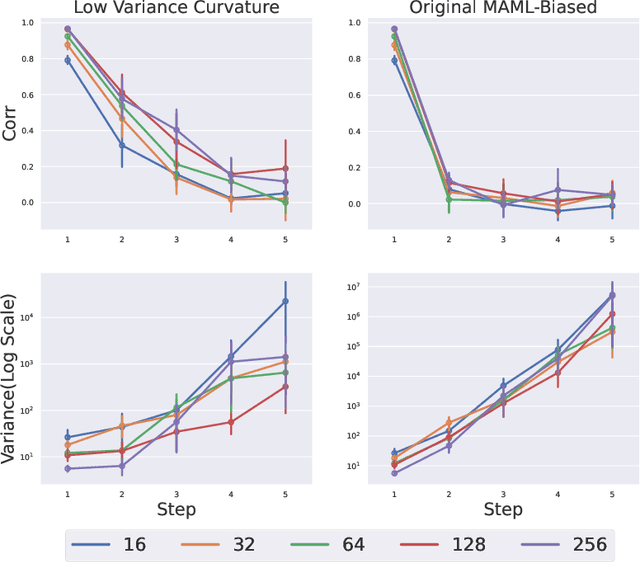
Abstract:In recent years, gradient based Meta-RL (GMRL) methods have achieved remarkable successes in either discovering effective online hyperparameter for one single task (Xu et al., 2018) or learning good initialisation for multi-task transfer learning (Finn et al., 2017). Despite the empirical successes, it is often neglected that computing meta gradients via vanilla backpropagation is ill-defined. In this paper, we argue that the stochastic meta-gradient estimation adopted by many existing MGRL methods are in fact biased; the bias comes from two sources: 1) the compositional bias that is inborn in the structure of compositional optimisation problems and 2) the bias of multi-step Hessian estimation caused by direct automatic differentiation. To better understand the meta gradient biases, we perform the first of its kind study to quantify the amount for each of them. We start by providing a unifying derivation for existing GMRL algorithms, and then theoretically analyse both the bias and the variance of existing gradient estimation methods. On understanding the underlying principles of bias, we propose two mitigation solutions based on off-policy correction and multi-step Hessian estimation techniques. Comprehensive ablation studies have been conducted and results reveals: (1) The existence of these two biases and how they influence the meta-gradient estimation when combined with different estimator/sample size/step and learning rate. (2) The effectiveness of these mitigation approaches for meta-gradient estimation and thereby the final return on two practical Meta-RL algorithms: LOLA-DiCE and Meta-gradient Reinforcement Learning.
Data-Free Knowledge Transfer: A Survey
Dec 31, 2021
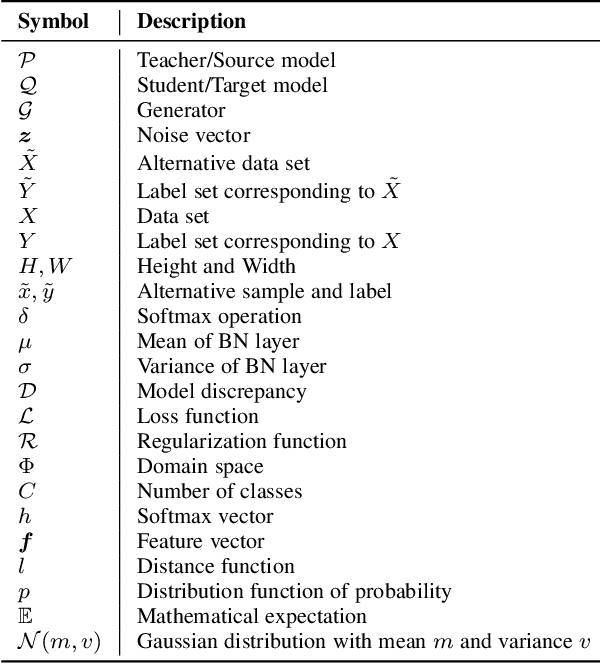


Abstract:In the last decade, many deep learning models have been well trained and made a great success in various fields of machine intelligence, especially for computer vision and natural language processing. To better leverage the potential of these well-trained models in intra-domain or cross-domain transfer learning situations, knowledge distillation (KD) and domain adaptation (DA) are proposed and become research highlights. They both aim to transfer useful information from a well-trained model with original training data. However, the original data is not always available in many cases due to privacy, copyright or confidentiality. Recently, the data-free knowledge transfer paradigm has attracted appealing attention as it deals with distilling valuable knowledge from well-trained models without requiring to access to the training data. In particular, it mainly consists of the data-free knowledge distillation (DFKD) and source data-free domain adaptation (SFDA). On the one hand, DFKD aims to transfer the intra-domain knowledge of original data from a cumbersome teacher network to a compact student network for model compression and efficient inference. On the other hand, the goal of SFDA is to reuse the cross-domain knowledge stored in a well-trained source model and adapt it to a target domain. In this paper, we provide a comprehensive survey on data-free knowledge transfer from the perspectives of knowledge distillation and unsupervised domain adaptation, to help readers have a better understanding of the current research status and ideas. Applications and challenges of the two areas are briefly reviewed, respectively. Furthermore, we provide some insights to the subject of future research.
Superpixel-Based Building Damage Detection from Post-earthquake Very High Resolution Imagery Using Deep Neural Networks
Dec 22, 2021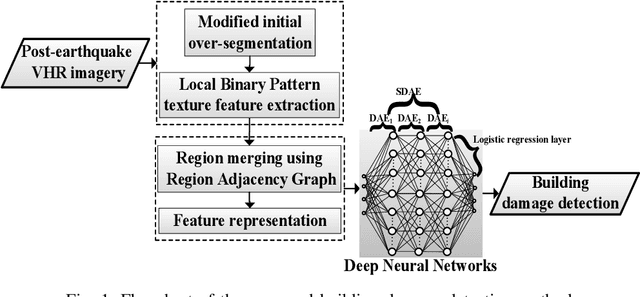
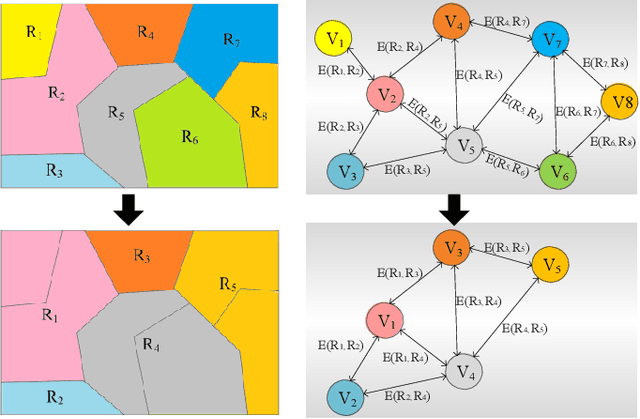
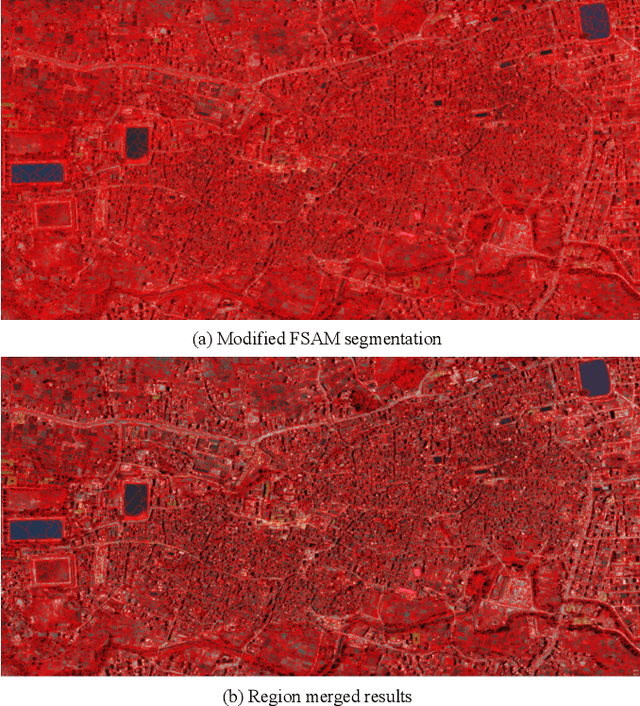
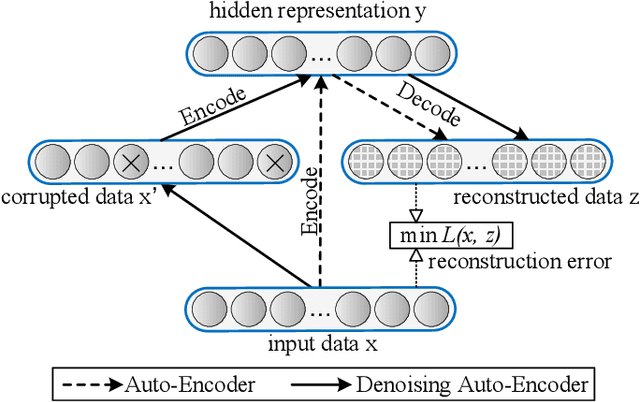
Abstract:Building damage detection after natural disasters like earthquakes is crucial for initiating effective emergency response actions. Remotely sensed very high spatial resolution (VHR) imagery can provide vital information due to their ability to map the affected buildings with high geometric precision. Many approaches have been developed to detect damaged buildings due to earthquakes. However, little attention has been paid to exploiting rich features represented in VHR images using Deep Neural Networks (DNN). This paper presents a novel superpixel based approach combining DNN and a modified segmentation method, to detect damaged buildings from VHR imagery. Firstly, a modified Fast Scanning and Adaptive Merging method is extended to create initial over-segmentation. Secondly, the segments are merged based on the Region Adjacent Graph (RAG), considered an improved semantic similarity criterion composed of Local Binary Patterns (LBP) texture, spectral, and shape features. Thirdly, a pre-trained DNN using Stacked Denoising Auto-Encoders called SDAE-DNN is presented, to exploit the rich semantic features for building damage detection. Deep-layer feature abstraction of SDAE-DNN could boost detection accuracy through learning more intrinsic and discriminative features, which outperformed other methods using state-of-the-art alternative classifiers. We demonstrate the feasibility and effectiveness of our method using a subset of WorldView-2 imagery, in the complex urban areas of Bhaktapur, Nepal, which was affected by the Nepal Earthquake of April 25, 2015.
Offline Pre-trained Multi-Agent Decision Transformer: One Big Sequence Model Tackles All SMAC Tasks
Dec 20, 2021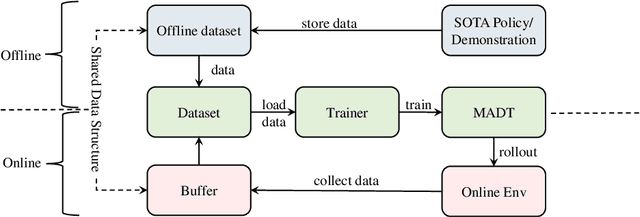
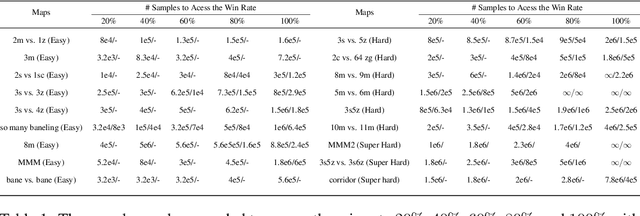
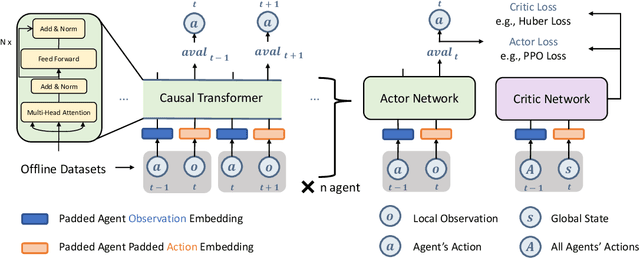
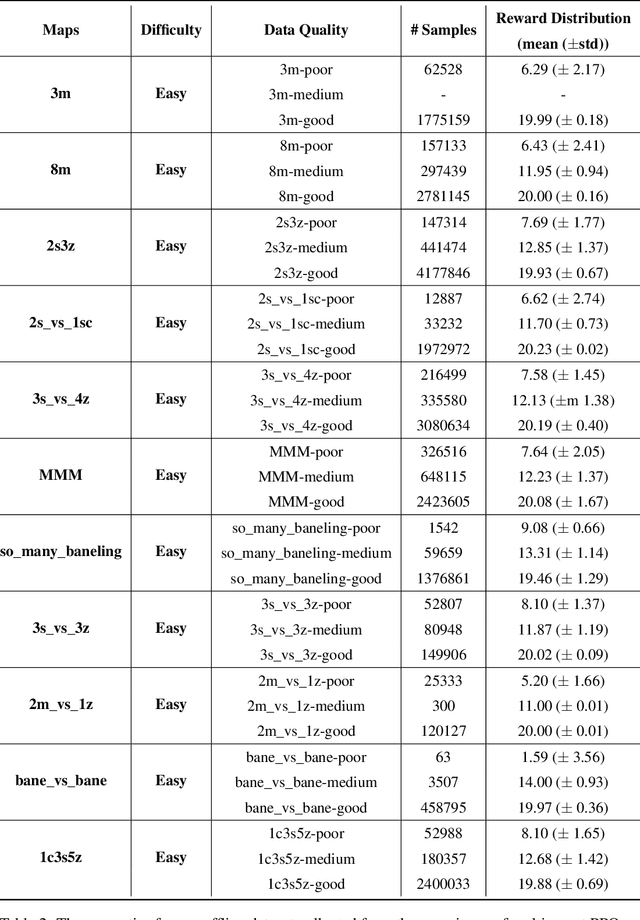
Abstract:Offline reinforcement learning leverages previously-collected offline datasets to learn optimal policies with no necessity to access the real environment. Such a paradigm is also desirable for multi-agent reinforcement learning (MARL) tasks, given the increased interactions among agents and with the enviroment. Yet, in MARL, the paradigm of offline pre-training with online fine-tuning has not been studied, nor datasets or benchmarks for offline MARL research are available. In this paper, we facilitate the research by providing large-scale datasets, and use them to examine the usage of the Decision Transformer in the context of MARL. We investigate the generalisation of MARL offline pre-training in the following three aspects: 1) between single agents and multiple agents, 2) from offline pretraining to the online fine-tuning, and 3) to that of multiple downstream tasks with few-shot and zero-shot capabilities. We start by introducing the first offline MARL dataset with diverse quality levels based on the StarCraftII environment, and then propose the novel architecture of multi-agent decision transformer (MADT) for effective offline learning. MADT leverages transformer's modelling ability of sequence modelling and integrates it seamlessly with both offline and online MARL tasks. A crucial benefit of MADT is that it learns generalizable policies that can transfer between different types of agents under different task scenarios. On StarCraft II offline dataset, MADT outperforms the state-of-the-art offline RL baselines. When applied to online tasks, the pre-trained MADT significantly improves sample efficiency, and enjoys strong performance both few-short and zero-shot cases. To our best knowledge, this is the first work that studies and demonstrates the effectiveness of offline pre-trained models in terms of sample efficiency and generalisability enhancements in MARL.
Understanding Square Loss in Training Overparametrized Neural Network Classifiers
Dec 07, 2021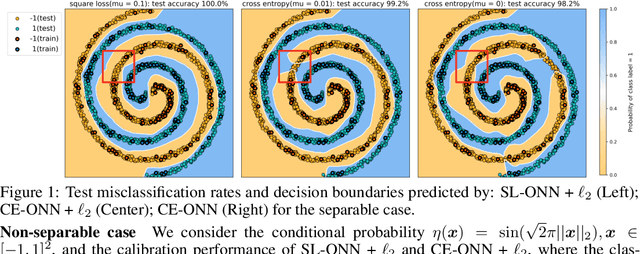
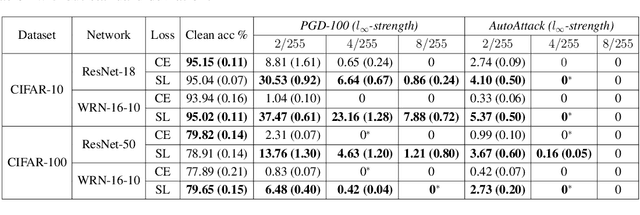


Abstract:Deep learning has achieved many breakthroughs in modern classification tasks. Numerous architectures have been proposed for different data structures but when it comes to the loss function, the cross-entropy loss is the predominant choice. Recently, several alternative losses have seen revived interests for deep classifiers. In particular, empirical evidence seems to promote square loss but a theoretical justification is still lacking. In this work, we contribute to the theoretical understanding of square loss in classification by systematically investigating how it performs for overparametrized neural networks in the neural tangent kernel (NTK) regime. Interesting properties regarding the generalization error, robustness, and calibration error are revealed. We consider two cases, according to whether classes are separable or not. In the general non-separable case, fast convergence rate is established for both misclassification rate and calibration error. When classes are separable, the misclassification rate improves to be exponentially fast. Further, the resulting margin is proven to be lower bounded away from zero, providing theoretical guarantees for robustness. We expect our findings to hold beyond the NTK regime and translate to practical settings. To this end, we conduct extensive empirical studies on practical neural networks, demonstrating the effectiveness of square loss in both synthetic low-dimensional data and real image data. Comparing to cross-entropy, square loss has comparable generalization error but noticeable advantages in robustness and model calibration.
Learning State Representations via Retracing in Reinforcement Learning
Nov 24, 2021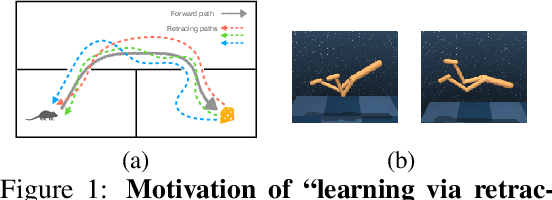

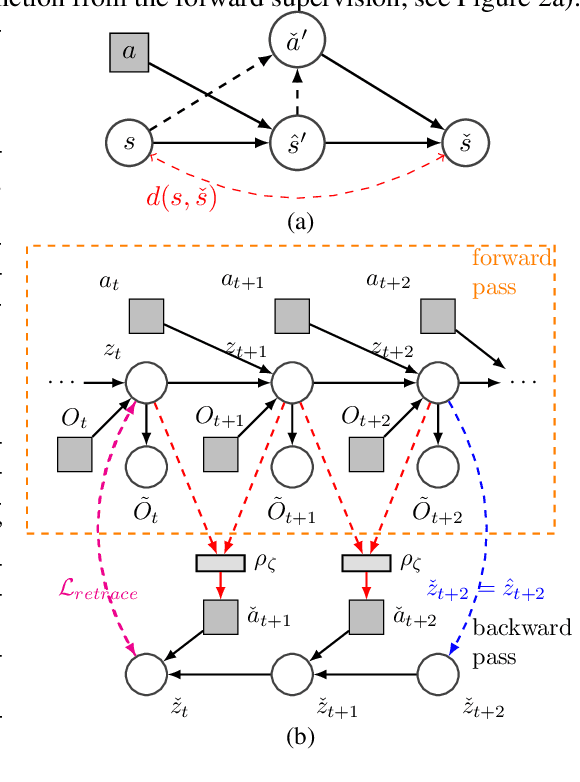
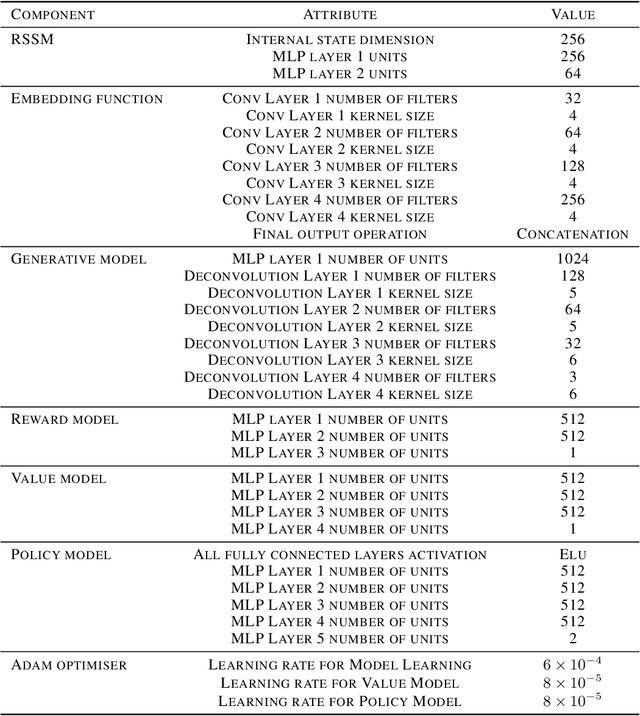
Abstract:We propose learning via retracing, a novel self-supervised approach for learning the state representation (and the associated dynamics model) for reinforcement learning tasks. In addition to the predictive (reconstruction) supervision in the forward direction, we propose to include `"retraced" transitions for representation/model learning, by enforcing the cycle-consistency constraint between the original and retraced states, hence improve upon the sample efficiency of learning. Moreover, learning via retracing explicitly propagates information about future transitions backward for inferring previous states, thus facilitates stronger representation learning. We introduce Cycle-Consistency World Model (CCWM), a concrete instantiation of learning via retracing implemented under existing model-based reinforcement learning framework. Additionally we propose a novel adaptive "truncation" mechanism for counteracting the negative impacts brought by the "irreversible" transitions such that learning via retracing can be maximally effective. Through extensive empirical studies on continuous control benchmarks, we demonstrates that CCWM achieves state-of-the-art performance in terms of sample efficiency and asymptotic performance.
 Add to Chrome
Add to Chrome Add to Firefox
Add to Firefox Add to Edge
Add to Edge